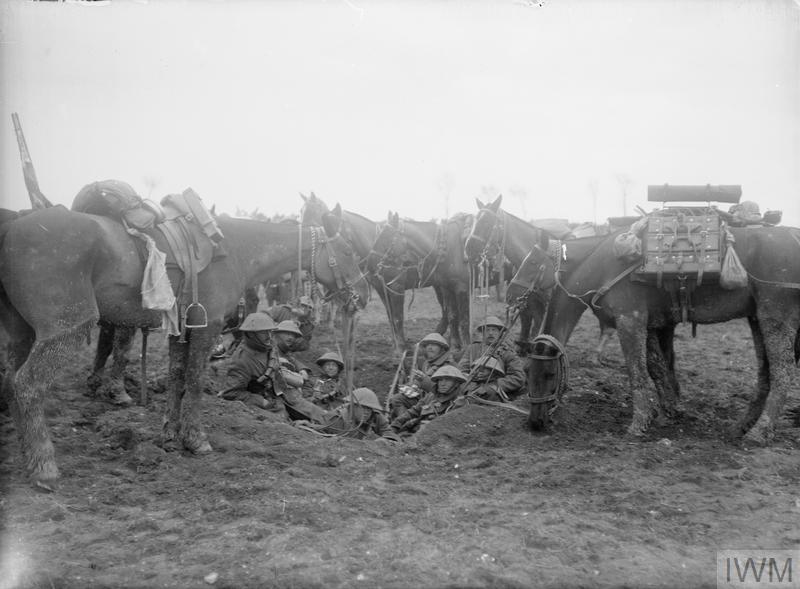Cambrai, 1917, 18
The Battle of Cambrai fought in November/December 1917, proved to be a significant event in World War One. Cambrai was the first battle in which tanks were used en masse In fact, Cambrai saw a mixture of tanks being used, heavy artillery and air power. … The attack started at 06.20 on November 20th 1917.
The Honour is borne on the Guidon of the 3rd Hussars.
Detail
On the 17th of November, the 3rd Hussars arrived at the village of Tertry, twenty-five miles from Cambrai. Three days later, they rode forward with the Third Army in one of the boldest and most imaginative operations of the war.
Without the usual warning bombardment, and deceived by feint attacks, the Germans were taken completely by surprise as almost 400 tanks rumbled across the rolling downland towards the Hindenburg Line, followed by six divisions of infantry, three of cavalry, and 1,000 guns.
By nightfall, the British were five miles inside the main defensive system, and only a secondary, unfinished line lay between them and the open country beyond.
If this bridgehead had been exploited by powerful reserves, Cambrai might have been taken, but due to the fact that all of the tanks and most of the infantry had been thrown into the first assault, the men were exhausted and this did not happen.
After standing about the battlefield all day, in miserable weather, the regiment was moved back late at night to Villers-Faucon. During the next two days, as the Germans brought up reinforcements, all cavalry was withdrawn, but on the 23rd they were put at the disposal of the 4th Corps, for the defence of Bourlon Hill.
This small wooded feature, on the north of the British salient, was of vital importance: it changed hands several times, with most bitter fighting; and it was there, on the evening of the 27th, that the 3rd Hussars finally went into the line, as infantry.
Lt HR Barton had already been awarded an immediate Military Cross for work on patrol, two days before; and a stretcher-bearer, Tpr J Lauder, also gained an immediate award of the Military Medal for his gallantry in Bourlon Wood.
The regiment lost 7 men killed, 2 officers and 29 other ranks wounded, all from shelling on the night of the 27th; but their presence, with the dismounted brigade of the 2nd Cavalry Division, enabled the 4th Corps to hold on.


